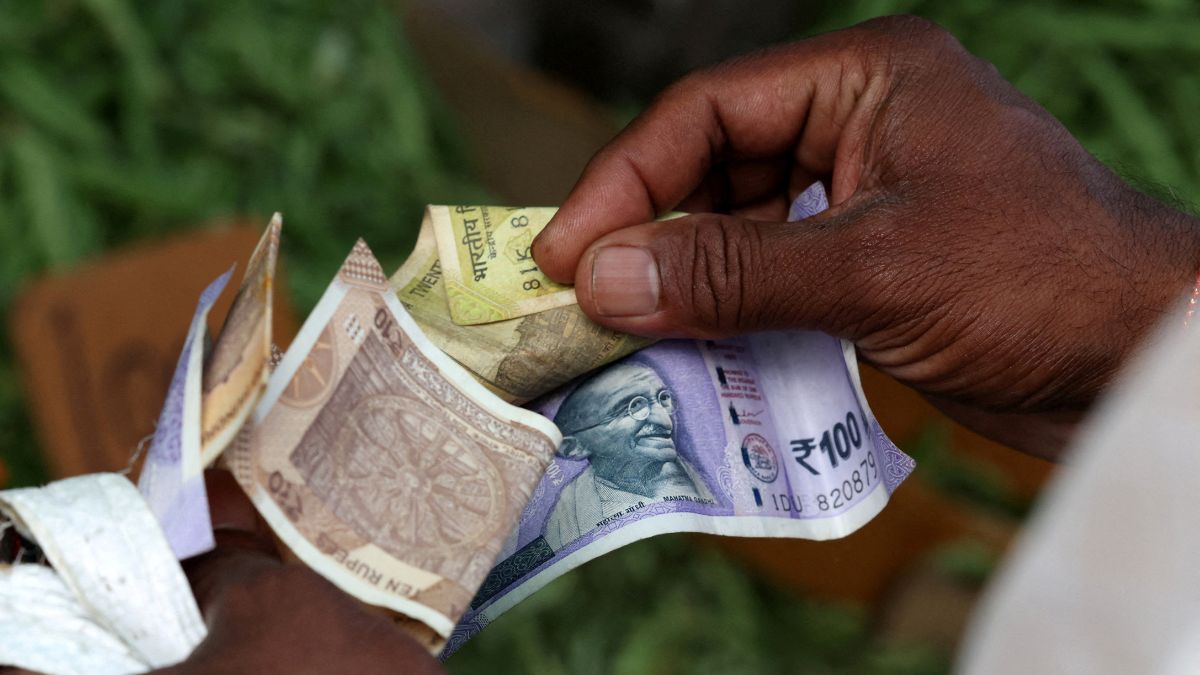The Indian rupee has been trading near its lowest levels on record, even as the United States dollar continues to weaken globally.
Under normal circumstances, a declining dollar provides relief to emerging market currencies like the rupee, as it reduces import costs and tends to attract capital inflows.
However, the current environment has been anything but typical.
On Wednesday, the rupee hovered near its all-time low, closing at around 88.74 per US dollar after hitting an intra-day low of 88.80.
This comes just a day after the currency slid to a record close of 88.73, highlighting the intense downward pressure on India’s foreign exchange markets.
The paradox is stark: the US dollar has been weakening steadily against a basket of global currencies throughout 2025, yet the rupee has been sliding further.
Key drivers behind the dollar weakness
The Dollar Index (DXY), which tracks the performance of the US currency against six major peers, has been in a clear downtrend this year.
The index has dropped 11.3 per cent year-to-date and about 7 per cent since April, reflecting growing concerns about the United States’ economic trajectory.
Key drivers of this dollar decline include a rising fiscal deficit, weakening growth prospects, and expectations of further interest rate cuts by the US Federal Reserve.
These factors have prompted a long-term shift in investor positioning, with many analysts expecting the dollar’s weakness to persist in the medium term unless there is a substantial improvement in US growth or a dramatic reduction in fiscal risks.
Despite this backdrop, the rupee has continued to weaken, diverging from the general trend seen in other currencies.
On Tuesday, the rupee touched an intraday low of 88.82, the weakest it has ever been. It later closed at 88.73, setting a new record closing low.
The following day, it opened at 88.80, dropped further, and then stabilised after reported intervention by the Reserve Bank of India (RBI).
Currency experts attribute this unusual behaviour to country-specific factors that are weighing on India’s financial markets, overshadowing the global softness of the dollar.
US tariffs & visa changes rattle Indian markets
Two recent US policy decisions have significantly impacted investor sentiment toward India.
First, the US government announced higher tariffs on Indian goods, raising concerns about the competitiveness of Indian exports and the potential impact on India’s trade balance.
Second, and more directly impactful for the Indian economy, the US introduced a steep increase in H-1B visa application fees, now set at $100,000 for new applications.
This hike directly affects India’s vast information technology sector, which relies heavily on sending skilled workers to the US for client projects.
Adding to these concerns, Washington unveiled plans to overhaul the visa selection process, giving preference to higher-paid and more specialised workers.
Last year, 71 per cent of approved H-1B beneficiaries were Indian nationals, highlighting the outsized impact these changes could have on India’s IT companies.
These policy moves have fuelled fears of reduced outsourcing opportunities and higher costs for Indian firms, triggering a sell-off in IT stocks and broader market weakness.
Heavy foreign outflows deepen the rupee’s woes
Foreign portfolio investors (FPIs) have been steadily withdrawing funds from Indian markets, compounding the rupee’s troubles.
On Tuesday, September 23, foreign investors sold ₹3,551.19 crore ($399.9 million) worth of Indian equities, the largest single-day sale in September.
This latest round of selling pushed the total net equity outflows for September to $1 billion, while year-to-date foreign sales now stand at approximately $16 billion.
The scale of these outflows has put continuous pressure on the rupee, limiting its ability to benefit from global dollar weakness.
Persistent selling has also weighed on India’s stock markets. On Wednesday, the BSE Sensex dropped 380 points to 81,721.62, while the Nifty 50 declined 106 points to 25,063.05.
Fifteen of the sixteen major sectoral indices opened lower, with small-cap and mid-cap indices falling 0.2 per cent and 0.5 per cent, respectively.
The IT index was the worst performer, slipping 0.9 per cent amid fears that the visa fee hike would erode profit margins. Autos fell 0.5 per cent as well, retreating from record highs hit earlier in the week.
Among individual stocks, Ashok Leyland fell 2.6 per cent after Goldman Sachs downgraded the stock to “neutral” from “buy,” citing limited upside after recent gains.
Minda Corporation rose 7.5 per cent after projecting its revenue would grow 3.5 times between fiscal 2025 and fiscal 2030.
Sri Lotus Developers gained 5.2 per cent after Motilal Oswal initiated coverage with a “buy” recommendation, describing it as a key play in Mumbai’s redevelopment sector.
RBI interventions and the fight to stabilise the rupee
The Reserve Bank of India has been actively intervening in currency markets to prevent a disorderly decline in the rupee.
According to traders, the central bank has been operating in both the non-deliverable forward (NDF) market and the onshore spot market, selling dollars to support the rupee when it approaches critical levels.
Market participants observed that RBI likely stepped in on Monday and again on Wednesday to arrest the rupee’s slide when it approached the 88.80 mark. This has helped limit volatility but has not been sufficient to reverse the broader downward trend.
The central bank’s challenge is compounded by the fact that India remains a net importer of crude oil, and global prices have inched higher. Brent crude, the international benchmark, was trading at $67.79 per barrel, adding to import-related dollar demand.
Amid global uncertainties, gold prices have surged to record highs, touching $3,790.82 per ounce.
The rise reflects strong safe-haven demand from investors seeking protection from currency volatility and geopolitical risks.
With inputs from agencies
)